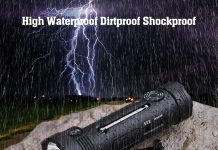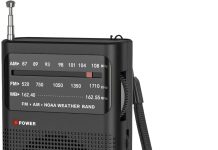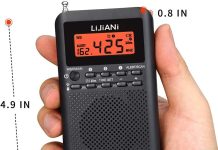Imagine being in a situation where you urgently need accurate and up-to-date information about weather emergencies. That’s where emergency radios come in. These reliable and essential devices have the power to receive a range of weather alerts that can help keep you and your loved ones safe. But have you ever wondered exactly what kind of weather alerts emergency radios are capable of receiving? In this article, we will explore the different types of weather alerts that these radios can pick up, ensuring that you are well-informed and prepared for any weather-related emergency that may come your way.
Review contents
Types of Weather Alerts
When it comes to keeping ourselves safe and informed, weather alerts play a crucial role. They provide us with timely information about potentially hazardous weather conditions in our area, allowing us to take necessary precautions and make informed decisions. There are various types of weather alerts that emergency radios can receive. Let’s take a closer look at each of them.
Severe Weather Alerts
Severe weather alerts are issued when the National Weather Service (NWS) detects severe weather conditions that pose a threat to life and property. These alerts are designed to notify the public about imminent or occurring dangerous weather events. Severe weather alerts cover a range of conditions like thunderstorms, tornadoes, hurricanes, floods, and winter storms.
Tornado Warnings
Tornado warnings are a subset of severe weather alerts specifically focused on tornadoes. When a tornado is expected to develop or has been observed in a particular area, the NWS issues a tornado warning. This alert is a clear indication that immediate action should be taken to protect oneself from the potentially devastating effects of a tornado.
Hurricane Warnings
Similar to tornado warnings, hurricane warnings are issued when a hurricane is approaching a specific coastal area. These warnings provide essential information about the expected path, intensity, and timing of the hurricane. By receiving a hurricane warning through their emergency radios, people in the affected areas can evacuate, secure their homes, and prepare for the impact of the storm.
Flood Warnings
Flood warnings are issued when the NWS identifies the potential for flooding in a particular area. These alerts are particularly important as flooding can occur rapidly and have dangerous consequences. By receiving a flood warning, individuals can take steps to protect themselves and their property. This may involve moving to higher ground, taking shelter, or securing valuables.
Winter Storm Warnings
Winter storm warnings are issued when significant winter weather, such as heavy snow, ice, or blizzards, is expected to impact an area. These alerts help residents prepare for hazardous travel conditions, power outages, and the need for extra precautions. By staying informed through their emergency radios, individuals can make informed decisions about travel and ensure their safety during these challenging weather conditions.
Fire Weather Warnings
Fire weather warnings are essential for areas prone to wildfires. When weather conditions, such as high temperatures, low humidity, and strong winds, create a high risk of wildfires, fire weather warnings are issued. These alerts serve as a call to action for residents to avoid activities that could ignite a fire and to be extremely cautious outdoors.
Extreme Heat Warnings
Extreme heat warnings are issued when there is a prolonged period of excessively high temperatures, resulting in potentially dangerous heat-related illnesses. These warnings provide information on how to stay cool, hydrated, and safe during extreme heat events. Emergency radios play a vital role in disseminating this life-saving information to the public.
Thunderstorm Warnings
Thunderstorm warnings are issued when severe thunderstorms with heavy rain, strong winds, lightning, and the potential for tornadoes are anticipated. These warnings allow individuals to seek shelter, protect themselves from lightning strikes, and take necessary precautions against damaging winds. By listening to their emergency radios, people can stay updated on the latest developments and make informed decisions to protect themselves.
Flash Flood Warnings
Flash flood warnings are issued when rapid and life-threatening flooding is imminent or occurring. These warnings help individuals in flood-prone areas to evacuate or find safe shelter. They provide critical information that enables people to respond quickly and effectively to the rapidly changing conditions associated with flash floods. Emergency radios are a reliable source for receiving these warnings in a timely manner.
Coastal Flood Warnings
Coastal flood warnings are issued for areas along the coastlines that are at risk of flooding due to high tides, storm surges, or other coastal weather conditions. These warnings help coastal residents and communities prepare for the potential impact of flooding, allowing for timely evacuations and protective measures. Emergency radios play a vital role in disseminating these warnings and ensuring the safety of those living in coastal areas.
Emergency Radio Capabilities
Now that we have a better understanding of the various types of weather alerts, let’s explore the capabilities of emergency radios in receiving and transmitting these alerts. Emergency radios are specially designed to receive weather alerts from various sources, including:
NOAA Weather Radio
NOAA Weather Radio is a nationwide network of radio stations that continuously broadcasts weather information directly from the NWS. These radio stations provide the most reliable and immediate source of weather information on a local and national level. Emergency radios equipped with NOAA Weather Radio capabilities can receive these broadcasts and keep users informed about severe weather conditions in their area.
Specific Area Message Encoding (SAME)
The Specific Area Message Encoding (SAME) feature is a unique code system used by emergency radios to filter weather alerts specific to the user’s location. By programming the radio with the appropriate SAME code, users can receive alerts that are relevant to their area while ignoring alerts from other regions. This ensures that users only receive critical weather information that directly affects them.
National Weather Service (NWS) Alerts
Emergency radios can also receive weather alerts directly from the National Weather Service. These alerts are issued by NWS forecasters and cover a wide range of severe weather events, including tornadoes, hurricanes, floods, and winter storms. By receiving these alerts through their emergency radios, individuals can stay informed and take appropriate actions to protect themselves and their loved ones.
Weatheradio Canada
In Canada, the Weatheradio Canada system provides similar capabilities as NOAA Weather Radio in the United States. It broadcasts weather information from Environment Canada, the national meteorological agency. Emergency radios equipped with Weatheradio Canada capabilities can receive these broadcasts, ensuring Canadians stay informed about severe weather conditions in their area.
Emergency Alert System (EAS)
The Emergency Alert System (EAS) is a national public warning system that allows emergency managers to quickly disseminate important information to the public, including weather alerts. Emergency radios are integrated with the EAS and can receive these alerts, ensuring users are notified of critical weather events and can take appropriate actions.
Mobile Alerts
In addition to receiving alerts through the aforementioned radio systems, emergency radios can also receive mobile alerts. These alerts are sent to smartphones and can be received on emergency radios equipped with mobile alert capabilities. This feature allows users to receive weather alerts even while on the move or when they don’t have access to traditional communication devices.
With these capabilities, emergency radios serve as a reliable source of weather alerts, ensuring that individuals stay informed and prepared for potentially hazardous weather conditions.
Severe Weather Alerts
Severe weather alerts serve as crucial warnings for dangerous weather conditions. Let’s explore in more detail what these alerts entail, the different types of severe weather alerts, their characteristics, and how they are broadcasted and notified to the public.
Definition
Severe weather alerts refer to notifications issued by the National Weather Service to warn the public about the potential threats posed by severe weather conditions. These alerts are issued when severe weather is imminent or already occurring. Severe weather can include thunderstorms, tornadoes, hurricanes, floods, and other dangerous weather phenomena.
Types of Severe Weather Alerts
There are various types of severe weather alerts that individuals may encounter:
-
Severe Thunderstorm Watch: This alert indicates that conditions are favorable for the development of severe thunderstorms in the specified area. It serves as an early warning for the potential formation of tornadoes, damaging winds, and large hail.
-
Severe Thunderstorm Warning: When a severe thunderstorm has been detected and poses an immediate threat to life and property, a severe thunderstorm warning is issued. This alert notifies the public to take cover and protect themselves from the dangerous conditions associated with the storm.
-
Tornado Watch: A tornado watch is issued when conditions in a particular area are favorable for tornado formation. It alerts the public to stay vigilant and be prepared for the possibility of a tornado developing.
-
Tornado Warning: A tornado warning is the most critical form of severe weather alert. It is issued when a tornado has been spotted, indicated by radar, or when there are strong indications that a tornado is imminent. This alert demands immediate action and urges individuals to seek shelter immediately.
-
Hurricane Watch: A hurricane watch is issued when conditions in a specified coastal area indicate the possible threat of a hurricane within the next 48 hours. It provides residents with time to prepare and activate their emergency plans.
-
Hurricane Warning: A hurricane warning is issued when a hurricane is expected to make landfall within a specified coastal area. This alert indicates that the threat is imminent, and residents should take immediate action to protect themselves and their properties.
Characteristics of Severe Weather Alerts
Severe weather alerts typically contain specific information about the type of severe weather event, its severity or level of risk, the affected area, and the expected time frame. They are designed to provide clear and concise instructions to the public, urging them to take appropriate actions to stay safe.
The alerts often include important safety tips and precautions, such as seeking shelter, avoiding unnecessary travel, securing outdoor items, and staying informed through trusted sources. These instructions are crucial to minimize the risk of harm or injury during severe weather events.
Broadcasts and Notifications
Severe weather alerts are broadcasted and notified to the public through various channels, including emergency radios. When an alert is issued by the National Weather Service, it is immediately transmitted through the NOAA Weather Radio system. Emergency radios equipped with NOAA Weather Radio capabilities receive these broadcasts and notify the users about the severe weather conditions in their area.
In addition to emergency radios, severe weather alerts are disseminated through various other channels, such as television and radio broadcasts, smartphone apps, social media platforms, and local authorities. The goal is to reach as many people as possible and ensure they receive the vital information needed to make informed decisions and stay safe during severe weather events.
By staying tuned to their emergency radios and being aware of the various types of severe weather alerts, individuals can take proactive measures to protect themselves and their communities from the potential dangers associated with severe weather.



























